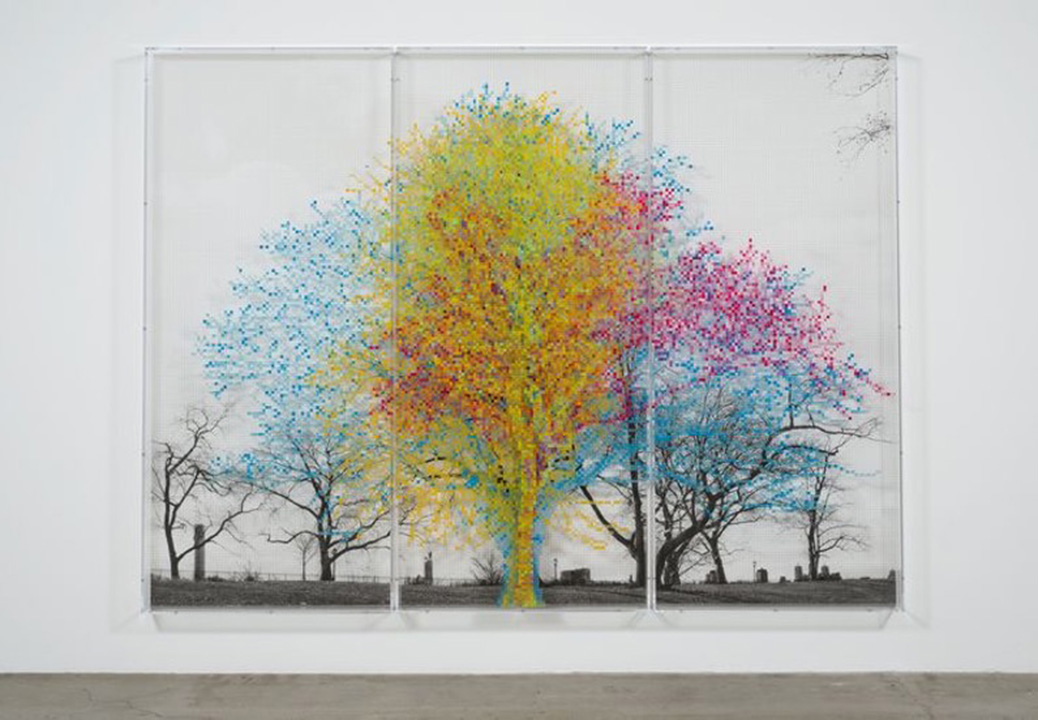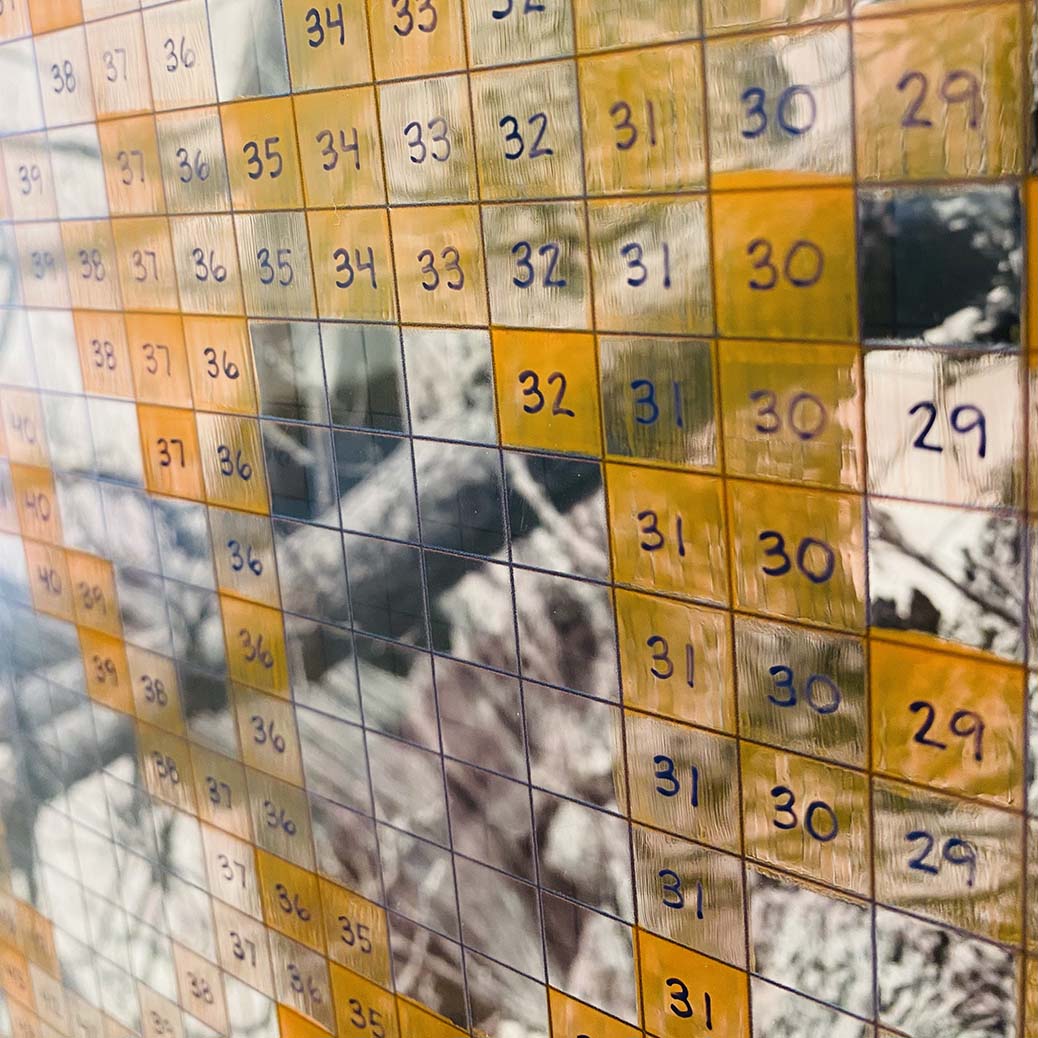
Stef Will
• 17 May 2021
All Systems Go…
I am really interested in Systems Art and love Charles Gaines’ work, so was really pleased to be able to see ‘Multiples of Nature, Trees and Faces’ at Hauser & Wirth London recently.
Systems have been described in their broadest sense as “anything that is not chaos” and systems can of course be found everywhere and anywhere in society, when looking closely enough. Boris Groys commented that it was in the 1960s, when art noticeably shifted its focus from “the individual creative act to a description, investigation and development of communication systems and visual codes”. In other words, the emphasis on a single art object as outcome of an artist’s activitywas often replaced with an organisation of information, which I find fascinating.
Systems have been by many respected artists including Haacke, Sol-Lewitt and Bochner, and there are many different ways artists have worked with systems. Sometimes, artists are tinkering with systems, actively interfering, while at other times, systems are being observed, and exposed by the artist. For his ‘Numbers and Trees’ series, Charles Gaines created an idiosyncratic system, in which he applies strict rules/formulas to visually represent objects such as trees.
Gaines is said to do this in order to explore the relationship between the objective and the subjective, as well as to interrogate concepts around creativity and imagination. He reflects on how a system can make decisions, rather than the artist’s imagination, and this may still elicit the same mental and emotional reaction in the viewer.

In an artist talk I watched online, he commented, “the viewer thinks he is interested because this is a playing field of imagination. But I have suspicions, because we attribute to our imagination things that are actually socially and culturally created. To the degree that you can have the same response to an intuitive impulse compared to something driven by a system … You can’t recognise the difference”. He went on to question, “in abstract expressionism a huge amount of importance was given to the gesture, which was very egocentric … Why does that gesture have value and what is the meaning, when your brain can respond in the same way to something created by a system?”
I will leave you with that though-provoking question (and some impressions from my recent gallery visit…).











